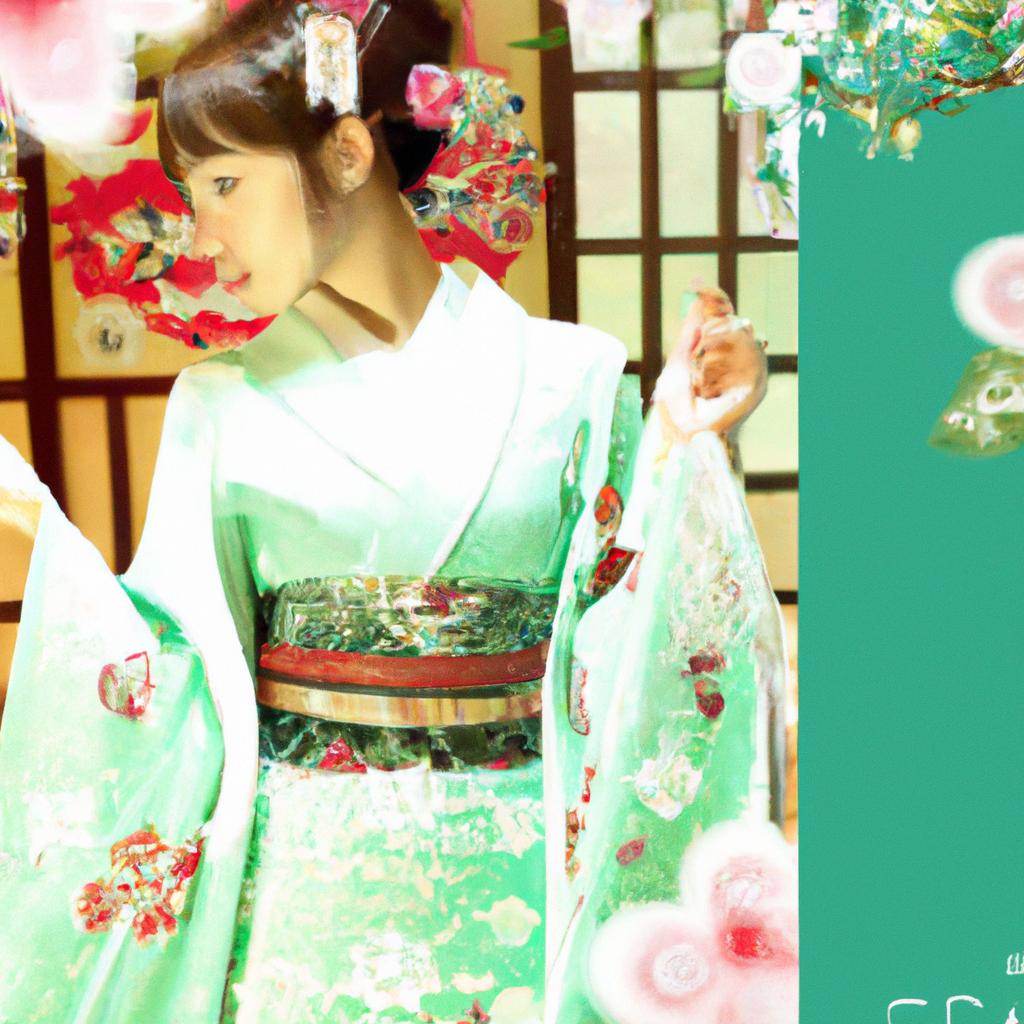
Introduction:
In the world of fashion, trends come and go every season. But have you ever wondered where these trends originate from? The answer is often deeply rooted in culture. Cultural influence on fashion trends is the driving force for many designers and brands, and it’s essential to understand this concept in the fashion industry.
Cultural influence on fashion can be defined as the impact of societal and cultural factors on the creation, popularity, and evolution of fashion trends. These factors include history, traditions, values, beliefs, customs, and lifestyles of different cultures around the world.
Understanding cultural influence on fashion is crucial for designers, brands, and consumers alike. It allows us to appreciate and respect the diversity and richness of different cultures while also being mindful of potential controversies. In this guide, we will explore the various aspects of cultural influence on fashion trends and its significance in the industry.
The History of Cultural Influence on Fashion Trends:
To fully understand the impact of culture on fashion, we must first look back at history. Many ancient civilizations, such as Ancient Egypt, Greece, and Persia, have influenced fashion trends with their unique styles and designs. The exchange of ideas and materials through colonization and globalization have also played a significant role in shaping fashion across cultures.
Fashion has always been a reflection of the times, and it’s no different when it comes to cultural influence. Through fashion, we can see how societal values and norms have evolved over the years. For example, the changing roles of women in society can be traced through the evolution of women’s clothing throughout history.
Current Cultural Influences on Fashion Trends:
Today, fashion trends are heavily influenced by various cultures worldwide. The rapid spread of information and images through social media has led to a more diverse and globalized fashion industry. We can see a mix of East Asian, African, South American, and other cultural influences in current fashion trends.
Celebrities and influencers also play a significant role in popularizing cultural fashion trends. Their influence on social media and red carpets can make or break a trend, leading to its widespread adoption or decline.
Cultural Appropriation vs. Cultural Appreciation:
As fashion becomes more diverse and globalized, the issue of cultural appropriation has become a hot topic of discussion. It is essential to understand the difference between cultural appropriation, which involves taking elements from another culture without understanding or respecting its significance, and cultural appreciation, which involves respectfully incorporating elements from another culture into designs.
There have been several cases of cultural appropriation in the fashion industry, leading to backlash and controversies. It’s crucial for designers and brands to educate themselves and be mindful of cultural sensitivity when incorporating aspects of different cultures into their designs.
The Future Forecast of Cultural Influence on Fashion Trends:
The fashion industry is continuously evolving, and so is the cultural landscape. As the world becomes more interconnected, we can expect to see even stronger and more diverse cultural influences on fashion trends. Technological advancements, political shifts, and environmental concerns may also have an impact on the future of cultural influence on fashion.
Conclusion:
In conclusion, cultural influence on fashion trends is a significant factor in the ever-changing world of fashion. It allows us to appreciate the richness and diversity of different cultures while also creating opportunities for exchange and growth. As the fashion industry continues to evolve, it’s crucial to remember the importance of understanding and respecting cultural influences and maintaining a mindful and inclusive approach.
Introduction
Fashion trends are constantly evolving, influenced by a variety of factors such as art, technology, and societal changes. However, one of the most significant drivers of fashion trends is culture. Cultural influence on fashion trends refers to how the values, beliefs, and traditions of different cultures shape and impact the styles and aesthetics of clothing and accessories.
Understanding this concept is crucial in the fashion industry as it helps designers and brands create designs that are relevant and appealing to their target audience. It also promotes diversity and inclusivity in fashion, which is essential in our increasingly globalized world.
History of Cultural Influence on Fashion Trends
Cultural influence on fashion trends is not a new phenomenon. Throughout history, various cultures have influenced fashion in significant ways. For example, the intricate designs and use of luxurious fabrics in Ancient Egyptian clothing have inspired designers for centuries. The colonization and globalization of the world have also played a role in the spread and fusion of cultural fashion trends.
Moreover, fashion has always been a reflection of societal values and norms. Changes in fashion trends often reflect shifts in cultural attitudes towards gender, social class, and political ideologies.
Current Cultural Influences on Fashion Trends
In recent years, there has been a significant rise in the popularity of cultural fashion trends. East Asian, African, and South American influences can be seen on runways and in street style all over the world. This is partly due to the widespread use of social media, which has made it easier for cultural fashion trends to spread and become mainstream.
Celebrities and influencers also play a crucial role in popularizing cultural fashion trends. Their large platforms and influence make it easier for these trends to reach a wide audience.
Cultural Appropriation vs. Cultural Appreciation
While cultural influence on fashion trends can be a positive thing, it is essential to understand the difference between cultural appropriation and appreciation. Cultural appropriation refers to the use of elements from a marginalized culture without proper understanding or respect, often for profit or gain. On the other hand, cultural appreciation involves respectfully incorporating cultural elements into designs and acknowledging their origins.
There have been several controversies in the fashion industry surrounding cultural appropriation. It is crucial for designers and brands to educate themselves and approach cultural inspirations with sensitivity and understanding.
Future Forecast of Cultural Influence on Fashion Trends
The fashion industry is becoming increasingly diverse and inclusive, and this trend is likely to continue. As the world becomes more connected, we can expect to see a fusion of cultural influences in fashion. However, global events, such as political shifts and climate change, may also influence cultural fashion trends in the future.
Conclusion
Cultural influence on fashion trends is a fascinating and ever-evolving concept. It highlights the interconnectedness of different cultures and the impact they have on each other. As the fashion industry continues to evolve, it is crucial to embrace and celebrate cultural diversity and to approach cultural influences with respect and understanding.
Importance of Understanding Cultural Influence on Fashion Trends in the Fashion Industry
In today’s fast-paced fashion industry, staying ahead of trends is crucial for designers and brands. However, it’s important to recognize that these trends are not created in a vacuum. They are heavily influenced by culture, which plays a significant role in shaping fashion.
Understanding cultural influence on fashion trends is essential for anyone involved in the industry. It not only allows designers to create more authentic and meaningful designs, but also promotes inclusivity and diversity in the fashion world.
Cultural influences can also impact consumer behavior, as people often seek out styles and trends that reflect their cultural backgrounds or interests. By understanding these influences, brands can better cater to their target demographics and foster a deeper connection with their customers.
Moreover, with the increasing awareness and demand for ethical and sustainable fashion, understanding cultural influences can help prevent cultural appropriation and promote cultural appreciation. This not only avoids potential controversies but also shows respect for the cultures and communities from which these influences originate.
In short, cultural influence is a powerful force in the fashion industry and cannot be ignored. By recognizing and understanding its impact, designers and brands can create more authentic and meaningful designs, connect with their customers, and promote a more inclusive and respectful fashion industry.
Overview of the different cultural factors that impact fashion trends
Culture plays a significant role in shaping fashion trends, from the fabrics and styles used to the colors and patterns represented. It is essential to understand the various cultural factors that influence fashion to create inclusive and culturally aware designs.
- Geographical location: The climate, landscape, and physical surroundings of a region can greatly impact fashion trends. For example, warmer climates often result in lightweight and breathable clothing, while colder regions may favor heavier fabrics and layering.
- Historical influences: The fashion trends of past cultures have often influenced current fashion. For instance, traditional garments from Ancient Egypt or Greece may be incorporated into modern designs.
- Traditions and customs: Cultural traditions and customs also play a significant role in fashion. Certain colors, symbols, or fabrics may hold deep cultural significance and influence design choices.
- Social values and norms: Fashion reflects the social values and norms of a society. For example, modesty may be emphasized in some cultures, resulting in more conservative clothing styles.
- Globalization: The increased interconnectedness of cultures through globalization has also impacted fashion trends. This can include the fusion of different cultural elements, as well as the spread of certain styles and designs across borders.
- Media and technology: With the rise of social media, cultural influences on fashion trends have become more widespread and diverse. People from different cultural backgrounds can now share their fashion styles and trends, leading to a global exchange of ideas.
History of Cultural Influence on Fashion Trends:
Throughout history, fashion has been heavily influenced by various cultures around the world. From Ancient Egypt to modern-day globalization, cultural factors have played a significant role in shaping fashion trends.
Ancient civilizations such as Egypt, Greece, and Persia were known for their distinct styles of clothing that later became iconic and influential in the fashion industry. The intricate designs and luxurious fabrics used in these cultures’ traditional clothing continue to inspire designers today.
However, the impact of cultural influence on fashion extends beyond just historical inspiration. The colonization of countries and the rise of globalization have also had a significant impact on fashion trends. With the spread of different cultures and ideas, fashion has become more diverse and inclusive.
Fashion is not just about style; it also reflects societal values and norms. As cultures continue to evolve, so do fashion trends, reflecting the changing views and attitudes of society. For example, the rise of women’s rights movements has led to more gender-neutral and body-positive fashion trends.
In today’s world, we see a mix of cultural influences from all corners of the globe. East Asian, African, and South American cultures have all played a role in shaping current fashion trends. Social media has also accelerated the spread of these trends, making them more accessible and visible to a global audience.
However, with cultural influence comes the issue of appropriation vs. appreciation. It is crucial for designers and brands to respect and give credit to the cultures they draw inspiration from, rather than appropriating their traditions and styles. The fashion industry has seen numerous controversies surrounding cultural appropriation, highlighting the need for education and awareness on this topic.
Moving forward, the fashion industry needs to continue embracing cultural diversity and promoting inclusivity. As the world continues to change, so will fashion trends, and cultural influences will undoubtedly play a vital role. It is up to us to appreciate and celebrate these cultural influences with respect and understanding.
History of Cultural Influence on Fashion Trends
Throughout history, fashion has been influenced by various cultures, from the opulent styles of Ancient Egypt to the elegant simplicity of Ancient Greece and the intricate designs of Persia. These early civilizations set the foundation for future fashion trends and continue to inspire designers today.
Ancient Egyptians were known for their extravagant clothing, with richly colored fabrics, intricate beading, and elaborate headpieces. Their style was a reflection of their culture, which valued adornment and status. Similarly, Ancient Greek fashion was characterized by flowing drapery and delicate details, reflecting their appreciation for beauty and balance in all aspects of life.
The Persian Empire also had a strong influence on fashion, with its luxurious silks and ornate embroidery techniques. The empire’s vast trade network spread these styles to other cultures, shaping fashion trends in regions such as Europe and Asia.
As the world became more interconnected through colonization and globalization, fashion trends began to blend and evolve. Colonization brought European styles to new territories, while also appropriating and altering traditional clothing from indigenous cultures. This exchange of ideas and styles continues to shape fashion trends today.
One of the key reasons for the lasting impact of cultural influences on fashion is the way it reflects societal values and norms. The clothes we wear convey messages about our individual identity and the society we live in. Thus, fashion trends are not simply about aesthetics but also serve as a means of self-expression and cultural representation.
The Impact of Colonization and Globalization on Fashion Trends Across Cultures
As we look back at the history of fashion, it’s impossible to ignore the role that colonization and globalization have played in shaping trends across cultures. When European countries colonized other parts of the world, they brought their own styles and clothing with them, influencing the fashion of those regions.
For example, during the 18th and 19th centuries, European colonization of Africa and Asia introduced Western clothing styles to these regions, leading to the fusion of traditional and modern elements in fashion. This can still be seen today in the incorporation of traditional prints and fabrics into contemporary designs.
Globalization has further accelerated the spread of fashion trends across cultures. With the rise of fast fashion and social media, styles and influences can now be shared and adopted at lightning speed. This has also led to a diversification of fashion, with a mix of cultural elements being incorporated into designs.
However, it’s important to acknowledge that the impact of colonization and globalization on fashion trends hasn’t always been positive. Cultural appropriation, the adoption of elements from one culture by another without proper understanding or respect, has been a major issue in the fashion industry. This has resulted in the exploitation and misrepresentation of certain cultures, causing harm and offense.
Therefore, when incorporating cultural elements into fashion, it’s vital to do so with sensitivity and respect. This means taking the time to understand the significance and meaning behind these elements and giving credit where it’s due. In doing so, we can celebrate and appreciate different cultures, rather than appropriating them for profit or trendiness.
How fashion reflects societal values and norms throughout history
Fashion is not just about clothing and accessories, it is a reflection of society as a whole. Throughout history, fashion has been influenced by cultural norms, beliefs, and values. It is a way for people to express their identity and communicate their social status.
In ancient civilizations, such as Egypt, Greece, and Persia, fashion was heavily influenced by religious customs and beliefs. For example, in Ancient Egypt, the rich and powerful would wear headdresses adorned with jewels to display their wealth and status. In Ancient Greece, clothing was used to differentiate between social classes, with the wealthy wearing elaborate garments and the poor wearing simple tunics.
The impact of colonization and globalization on fashion cannot be ignored. As different cultures and societies interacted, their fashion styles intermingled and evolved. For instance, European colonization of the Americas brought about the fusion of indigenous clothing styles with European designs.
Fashion also reflects societal values and norms. During times of war or economic struggle, fashion may become more utilitarian and functional, reflecting the need for practicality rather than extravagance. On the other hand, during peaceful and prosperous times, fashion tends to be more elaborate and extravagant, reflecting the values of luxury and excess.
Today, fashion continues to reflect societal values and norms, but with a greater emphasis on individual expression and diversity. Different cultural influences can be seen in mainstream fashion, with traditional elements being incorporated and celebrated. This reflects the growing acceptance and appreciation of diverse cultures in society.
- For example, African prints and patterns have become popular in Western fashion, representing a celebration of African culture and heritage.
- Additionally, the rise of sustainable and ethical fashion reflects the growing social consciousness and value placed on ethical practices and environmental responsibility.
Overall, fashion is closely intertwined with societal values and norms, acting as a mirror for the beliefs and attitudes of the time. By understanding the cultural influences on fashion throughout history, we can gain insight into the evolution of society and appreciate the diverse perspectives and identities within it.
Current Cultural Influences on Fashion Trends:
In today’s globalized world, fashion trends are constantly being influenced by different cultures from all around the globe. From traditional garments and styles to modern interpretations, cultural influences play a significant role in shaping the ever-evolving fashion industry.
Social media has played a major role in accelerating the spread of cultural fashion trends. With the click of a button, we can now easily access and be inspired by fashion from different parts of the world. This has led to a more diverse and inclusive representation of cultural influences in mainstream fashion.
Furthermore, celebrities and influencers have also contributed to popularizing cultural fashion trends. By incorporating elements from their own cultures into their personal style or collaborations with fashion brands, they have helped to showcase and celebrate diversity in the fashion industry.
Some current examples of cultural influences on fashion trends include the rise of East Asian and African inspired fashion, as well as the incorporation of South American prints and colors. These trends not only bring new styles to the forefront, but also provide a platform for marginalized communities to be represented and appreciated in the fashion world.
However, it is important to distinguish between cultural appropriation and cultural appreciation when it comes to incorporating cultural elements into fashion. Designers and brands must be mindful and respectful of the origins and meanings behind these cultural influences, and avoid exploiting or appropriating them for profit.
In conclusion, as the world becomes more interconnected, cultural influences on fashion trends will continue to thrive and evolve. It is crucial for the industry to acknowledge and embrace these influences with respect and awareness, promoting diversity and inclusivity in the ever-changing world of fashion.
Current Cultural Influences on Fashion Trends
Fashion has always been heavily influenced by cultural elements, from traditional dress to modern street style. In recent years, there has been a surge in the incorporation of diverse cultures into fashion trends, as designers and brands seek inspiration from different parts of the world.
Currently, East Asian influences are prevalent in fashion, with styles like Japanese streetwear and Korean beauty trends gaining popularity around the globe. African cultures have also had a major impact on fashion, with vibrant prints and traditional fabrics being used in mainstream fashion lines. South American influences, particularly from countries like Brazil and Mexico, have also made their mark in the fashion world through colorful and playful designs.
Social media has played a significant role in the spread and diversification of these cultural influences in fashion. With the rise of platforms like Instagram, fashion trends can quickly go viral, leading to increased exposure and interest in different cultural styles.
Another factor contributing to the current cultural influences on fashion trends is the power of celebrities and influencers. They often serve as trendsetters, incorporating various cultural elements into their style and bringing them into the mainstream. This not only adds diversity to the fashion industry but also helps to break down cultural barriers and promote inclusivity.
It is essential to recognize and celebrate the cultural influences in fashion, but it is also crucial to do so respectfully. Designers and brands must ensure that they properly credit and honor the cultures from which they draw inspiration. This brings up the important distinction between cultural appropriation and cultural appreciation.
Current Cultural Influences on Fashion Trends:
Social media has greatly impacted the spread and diversification of cultural fashion trends in recent years. Platforms like Instagram, TikTok, and Twitter have made it easier for fashion influencers and individuals to share and showcase global fashion styles and trends.
- The rise of street style photography has also played a role in highlighting and popularizing cultural fashion influences from around the world.
- East Asian influences, such as K-pop style and Japanese street fashion, have gained significant attention and influence through social media platforms.
- African fashion, including traditional prints and designs, has also seen a surge in popularity thanks to social media exposure.
- South American influences, specifically from countries like Brazil and Colombia, have also made their mark on fashion trends, with vibrant colors and bold patterns being embraced by designers and consumers alike.
Social media has allowed for a more diverse representation of cultural fashion influences and has given a platform for underrepresented cultures to showcase their styles and creativity.
The Role of Celebrities and Influencers in Popularizing Cultural Fashion Trends
In today’s fast-paced world, trends can spread quickly thanks to the power of social media and the influence of celebrities and influencers. This is especially true for fashion, as individuals look to their favorite stars for inspiration on what to wear. As a result, cultural fashion trends are often popularized by these high-profile figures.
Celebrities and influencers have a significant impact on the spread and popularity of cultural fashion trends. With their large following and often highly curated images, they can introduce these trends to a wider audience and make them more mainstream. We often see celebrities and influencers wearing traditional clothing or incorporating cultural elements into their outfits, which can spark interest and admiration from their fans.
Through their constant presence in the media, celebrities and influencers also have the power to shape and shift cultural perceptions of certain styles and designs. They can bridge the gap between different cultures and bring attention to the beauty and uniqueness of these fashion influences.
However, it is important to note that there can be a fine line between appreciation and appropriation when it comes to cultural fashion trends. While celebrities and influencers have the platform to spotlight these trends, it is crucial for them to do so respectfully and with an understanding of the significance behind the styles. This includes giving credit to the cultures and communities from which the trends originate.
In conclusion, the role of celebrities and influencers in popularizing cultural fashion trends is undeniable. Their influence and reach can bring attention and recognition to these trends, but it is essential for them to do so ethically and with cultural sensitivity. As consumers, we can also play a part in supporting responsible representation and appreciation of cultural fashion influences.
Cultural Appropriation vs. Cultural Appreciation
One important aspect to consider when it comes to cultural influence on fashion trends is the difference between cultural appropriation and cultural appreciation.
Cultural appropriation is the act of taking elements from a culture that is not your own without proper acknowledgment or respect. This can often lead to offensive or insensitive representations of a culture, especially when used for profit without benefiting or giving credit to the original culture.
In contrast, cultural appreciation involves genuinely valuing and celebrating aspects of a culture, while also giving proper credit and respect to its origins. This can be done through collaboration with members of that culture and promoting understanding and awareness of its significance.
In recent years, there have been numerous controversies in the fashion industry surrounding cultural appropriation, with brands facing backlash for appropriating traditional clothing, hairstyles, or symbols from marginalized cultures without permission or understanding. This highlights the importance of educating oneself and being respectful when incorporating cultural elements into fashion.
Designers and brands can avoid cultural appropriation by engaging in meaningful collaborations with individuals or groups from the culture they are drawing inspiration from. This allows for proper representation and acknowledgment of the culture’s contributions. Additionally, educating oneself on the history and significance of different cultural elements is crucial in avoiding offensive or insensitive representations.
In conclusion, while cultural appropriation is a harmful practice in the fashion industry, cultural appreciation can lead to a celebration and representation of diverse cultures. By understanding and respecting the cultural influences on fashion trends, we can create a more inclusive and diverse industry.
Cultural Appropriation vs. Cultural Appreciation in the Fashion Industry
When it comes to cultural influence on fashion trends, there is often a fine line between appreciation and appropriation. Cultural appropriation refers to the adoption of elements from another culture without understanding or respecting its significance. This can be seen as disrespectful and can have harmful effects, such as perpetuating harmful stereotypes or taking credit for cultural creations.
In contrast, cultural appreciation involves respectfully incorporating and acknowledging elements from different cultures. It involves understanding the history and significance behind these elements and giving credit where credit is due. In the fashion industry, this can mean collaborating with artists from different cultures or using traditional techniques and materials in a respectful and informed way.
Unfortunately, cultural appropriation is still prevalent in the fashion industry. Examples include designers using sacred symbols or traditional patterns without permission or understanding, or using models from certain cultures without proper representation or recognition.
To avoid cultural appropriation, it is important for designers and brands to educate themselves and consult with members of the culture they are drawing inspiration from. It is also crucial to give credit and compensation to the communities and individuals behind the cultural elements being used. By doing so, fashion can become a respectful platform for celebrating diverse cultures and promoting inclusivity.
Controversies Surrounding Cultural Appropriation in Fashion
Cultural appropriation in fashion is a highly debated topic, with many instances causing controversy and backlash for brands and designers. One example is the use of Native American-inspired headdresses on the runway or in photoshoots. This sparked outrage from Native American communities, citing the disrespectful and trivializing nature of using sacred items as a fashion statement.
In 2019, luxury brand Dior faced criticism for its Sauvage fragrance campaign featuring actor Johnny Depp and heavily referencing Native American culture. The brand was accused of perpetuating harmful stereotypes and profiting off of cultural appropriation. In response, Dior issued an apology and changed the name and marketing of the fragrance.
The issue of cultural appropriation in fashion also extends to traditional clothing and designs being copied and mass-produced without giving credit or compensation to the original creators. This has been seen with traditional African prints being used by fast fashion brands without involving or supporting the communities where they originate from.
These controversies highlight the importance of understanding the significance and history behind cultural elements used in fashion before incorporating them into designs, as well as the need for inclusivity and proper representation in the industry.
Tips for Respectfully Incorporating Cultural Elements in Fashion
As the fashion industry becomes increasingly globalized and diverse, it is important for designers and brands to be aware of cultural influences and respectfully incorporate them into their designs. Here are some tips to help you navigate this complex and sensitive topic:
- Research and educate yourself. Before incorporating elements from a different culture into your designs, take the time to research and understand the history and significance behind those elements. This will help you avoid any misinterpretations or insensitive representations.
- Collaborate with members of that culture. Consider partnering with local artisans or designers from the culture you wish to incorporate in your designs. This not only adds an authentic touch but also supports and uplifts the voices and talents of those within the culture.
- Avoid stereotypes and tokenism. Do not reduce a culture down to one or two stereotypical elements. Instead, embrace the full spectrum of diversity within that culture and showcase it in a respectful way.
- Give credit where credit is due. If you are inspired by a specific cultural element, acknowledge and credit its origin. This shows respect and appreciation for the culture and its people.
- Understand the difference between appropriation and appreciation. Appropriation involves taking elements from a culture without proper understanding or giving credit, while appreciation involves respectfully incorporating and celebrating a culture. Be mindful of where your inspiration and intentions lie.
By following these tips, you can ensure that your designs honor and celebrate different cultures, rather than exploit or offend them. Remember, diversity and representation are important values to uphold in the fashion industry.
Future Forecast of Cultural Influence on Fashion Trends
As society and fashion continue to evolve, so will the influence of cultures on fashion trends. With diversity and inclusivity becoming more prevalent in the fashion industry, we can expect to see a wide range of cultural influences in the future.
Social media will continue to play a significant role in the spread and popularity of cultural fashion trends. With the ability to connect people from all over the world, it has opened up a platform for diverse voices and styles to be heard and appreciated.
As we become more globally connected, we can expect to see a fusion of different cultures in fashion, creating unique and innovative designs. This will also bring attention to lesser-known cultures, promoting diversity and representation in the fashion industry.
However, global events can also have a significant impact on cultural influences in fashion. Political shifts and social movements can lead to changes in attitudes towards certain cultures and their fashion, while climate change may also affect the availability and use of traditional materials and techniques.
In conclusion, the future of cultural influence on fashion trends is one that embraces diversity, inclusivity, and innovation. As consumers become more conscious of the need for cultural appreciation rather than appropriation, the fashion industry must continue to evolve and adapt to these changing values.
The Evolving Landscape of Cultural Diversity in the Fashion Industry
In recent years, there has been a growing emphasis on diversity and inclusivity in the fashion industry. This has led to a more diverse representation of cultures in mainstream fashion, with designers and brands incorporating elements from various cultural backgrounds into their designs.
This shift towards cultural diversity in fashion can be seen on runways, in editorial spreads, and on social media, where models of different ethnicities and cultural backgrounds are being celebrated and embraced.
This change is not only driven by a desire for inclusivity, but also by consumer demand for more authentic and meaningful fashion. With the rise of social media and the increased access to information and global trends, consumers are now more aware and appreciative of cultural influences in fashion.
Furthermore, as the world becomes increasingly interconnected, the lines between different cultures and their fashion influences are becoming more blurred. Designers and brands are drawing inspiration from diverse sources and creating hybrid styles that reflect this cultural exchange.
Overall, the fashion industry is moving towards a more diverse and inclusive future, where cultural influences are celebrated and incorporated respectfully. It is important for designers and brands to continue acknowledging and embracing the diversity of cultures and their impact on fashion trends.
Predictions for the Future of Cultural Influence on Fashion Trends
The fashion industry is constantly evolving and one of the major factors driving this change is cultural influence. As we look towards the future, it is clear that culture will continue to play a significant role in shaping fashion trends. Here are some predictions for how cultural influences will impact the world of fashion in the years to come:
- Increasing Diversity: With globalization and the rise of social media, cultural influences from all corners of the world are becoming more accessible and influential. This trend is expected to continue, leading to a more diverse and inclusive fashion landscape.
- Fusion of Cultures: As fashion becomes increasingly globalized, we can expect to see a fusion of different cultural elements in designs. This could lead to unique and innovative styles that blend traditional and modern influences.
- Rise of Conscious Consumption: As consumers become more aware of cultural appropriation and its impact, there is a growing demand for ethically sourced and culturally respectful fashion. Brands that embrace diversity and celebrate cultures will likely see success in the future.
- Impact of Technology: In the future, technology is expected to play an even bigger role in the fashion industry. This could lead to the use of virtual reality and augmented reality to showcase and experience different cultural fashion trends.
It is clear that cultural influence will continue to be a vital aspect of fashion trends in the future. As this influence grows, it is crucial for designers, brands, and consumers to approach it with respect and understanding. By embracing cultural diversity and appreciating different influences, the fashion industry can continue to evolve and thrive in the years to come.
The Potential Impact of Global Events on Cultural Fashion Trends
Global events, such as political shifts and climate change, have the potential to significantly impact cultural influences on fashion trends. As the world becomes more interconnected and globalized, these events can have a ripple effect across different cultures and societies. In turn, this can be reflected in the fashion choices of individuals and communities.
Political shifts, such as changes in government or international relations, can have a direct impact on the availability and popularity of certain cultural fashion trends. For example, trade agreements or travel restrictions can affect the accessibility of materials and clothing styles from different cultures, leading to a shift in fashion trends. Similarly, social and economic changes resulting from political shifts can also influence the popularity and affordability of certain fashion trends.
Climate change can also play a role in cultural fashion trends. Changing weather patterns and environmental concerns can influence the types of materials and styles used in fashion, especially in regards to sustainability and ethical practices. This can lead to a shift in fashion trends as designers and consumers become more conscious of the impact their choices have on the environment.
In conclusion, global events have the potential to greatly impact cultural influences on fashion trends. This is why it is important for the fashion industry to stay aware and adapt to these changes in order to respect and appreciate the diversity of cultures and societies around the world.
Conclusion:
In conclusion, understanding and appreciating cultural influences on fashion trends is crucial in today’s diverse and interconnected world. From the rich history of past civilizations to the current impact of social media and celebrity culture, fashion has always been heavily influenced by different cultures.
However, it is important to acknowledge the difference between cultural appreciation and appropriation. As fashion continues to evolve and global events shape our society, it is necessary for designers and brands to respectfully incorporate cultural elements into their designs.
Moving forward, it is essential for the fashion industry to embrace and celebrate cultural diversity, rather than just cherry-picking certain elements for profit. By doing so, we can create a more inclusive and respectful industry that promotes cultural understanding and appreciation.
As we look to the future, it is clear that cultural influences will continue to be a driving force in shaping fashion trends. So let us all strive towards embracing and learning from different cultures, rather than simply appropriating them. Together, we can make fashion a truly diverse and beautiful reflection of our world.
Conclusion
In this guide, we have explored the concept of cultural influence on fashion trends and its significance in the fashion industry. We have discussed the history of cultural influences on fashion, including the impact of past civilizations and colonization on fashion trends. We have also examined current cultural influences on fashion, such as the rise of East Asian and African styles, and the role of social media in spreading these trends.
Moreover, we have delved into the sensitive topic of cultural appropriation and the importance of cultural appreciation in fashion. By looking at relevant case studies, we have highlighted the need for designers and brands to respectfully incorporate cultural elements into their designs.
Looking towards the future, we can expect to see a continued evolution of cultural diversity in the fashion industry. It is crucial for us to recognize and appreciate the impact of different cultures on fashion trends, especially in a rapidly changing world where global events can also play a role in shaping these influences.
To conclude, understanding and respecting cultural influences in fashion is not only important from a business standpoint, but it also allows for a celebration of diversity and the beauty of different cultures. As the fashion industry continues to evolve, let us strive for awareness, appreciation, and inclusivity when it comes to cultural influences on fashion trends.
The Importance of Understanding and Respecting Cultural Influences in the Fashion Industry
In today’s globalized world, cultural influences play a significant role in shaping fashion trends. Designers and brands are constantly drawing inspiration from different cultures and incorporating elements into their collections. However, it is crucial to understand and respect these cultural influences in order to avoid cultural appropriation and promote appreciation.
Cultural appropriation is the adoption of aspects of one culture by members of another culture without proper understanding or acknowledgement. This can be insensitive and offensive to the culture being borrowed from, especially when done for profit or without permission.
On the other hand, cultural appreciation is the acknowledgement and celebration of different cultures without appropriating or exploiting them. It involves understanding and respecting the significance and history behind certain cultural elements and giving credit where credit is due.
It is important for the fashion industry to recognize the impact of cultural influences and take responsibility for representing them accurately and respectfully. This not only shows a level of cultural understanding and appreciation but also avoids perpetuating harmful stereotypes or appropriation.
In recent years, there have been numerous controversies surrounding cultural appropriation in the fashion industry. One example is when luxury brand Gucci faced backlash for selling a turban-inspired headpiece on their runway, which was met with accusations of cultural insensitivity and exploitation. By contrast, brands like Dior and Chanel have received praise for collaborating with indigenous artists and communities to create collections that honor and celebrate their cultural heritage.
To avoid falling into the trap of cultural appropriation, designers and brands should take the time to research and educate themselves about the cultures they are drawing inspiration from. They should also collaborate and give credit to those who belong to the culture and have a deep understanding and connection to its traditions and history.
In conclusion, understanding and respecting cultural influences in the fashion industry is vital for creating a diverse and inclusive fashion landscape. By showcasing different cultures with appreciation and respect, the industry can not only avoid controversy but also promote cultural understanding and appreciation among consumers.
Final thoughts on the cultural impact on fashion trends
Cultural influence on fashion trends is a complex and ever-evolving concept in the fashion industry. It is important for designers, brands, and consumers to understand and appreciate the significance of cultural influences on fashion.
As we have seen throughout history, different cultures have played a significant role in shaping fashion trends. From Ancient Egypt to modern-day global influences, fashion reflects societal values and norms. With the rise of social media and the increasing diversity in the fashion industry, cultural influences have become even more prevalent.
However, it is crucial to differentiate between cultural appropriation and cultural appreciation in fashion. While incorporating elements from different cultures can be a form of appreciation, it is important to do so respectfully and with proper understanding of the culture’s significance and history.
Looking towards the future, it is clear that cultural influences will continue to shape fashion trends. With the world becoming increasingly interconnected, we are likely to see a more diverse representation of cultures in the fashion industry. It is also important to consider potential global events and their impact on cultural influences in fashion.
In conclusion, understanding and appreciating cultural influences on fashion trends is essential for the fashion industry. As consumers, we should support and celebrate diversity in fashion, and as designers and brands, we should strive to incorporate cultural elements with respect and awareness.
comments: 0

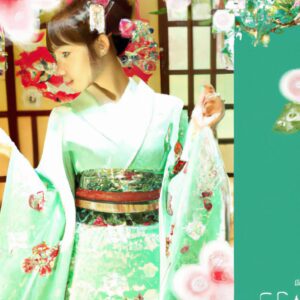
 Revolutionizing Fashion: How Technology is Shaping the Industry Today
Revolutionizing Fashion: How Technology is Shaping the Industry Today 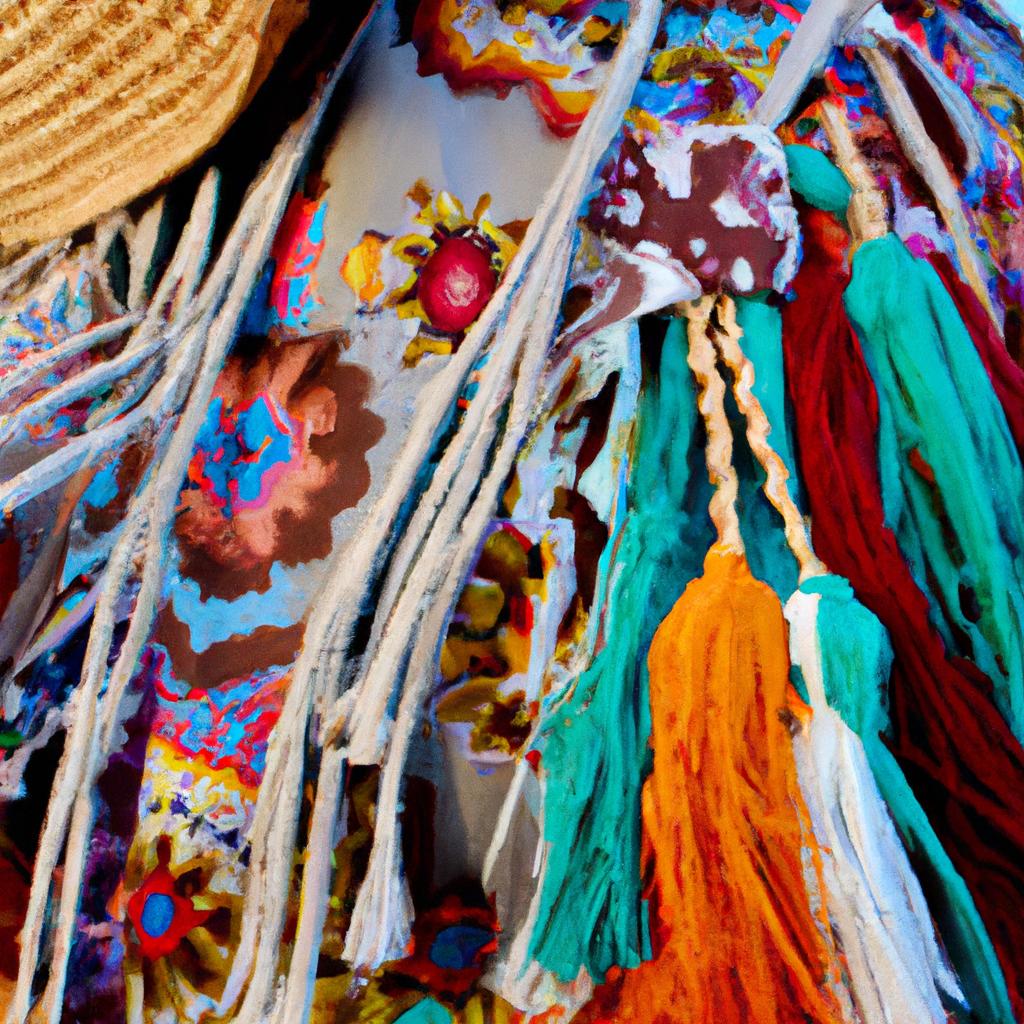 From East to West: Exploring Global Fashion Trends Across Continents
From East to West: Exploring Global Fashion Trends Across Continents  Revolutionizing Fashion by 2024: A Look into the Future of the Industry
Revolutionizing Fashion by 2024: A Look into the Future of the Industry  Transform Your Home with the Hottest Heating Options from BestHeating
Transform Your Home with the Hottest Heating Options from BestHeating 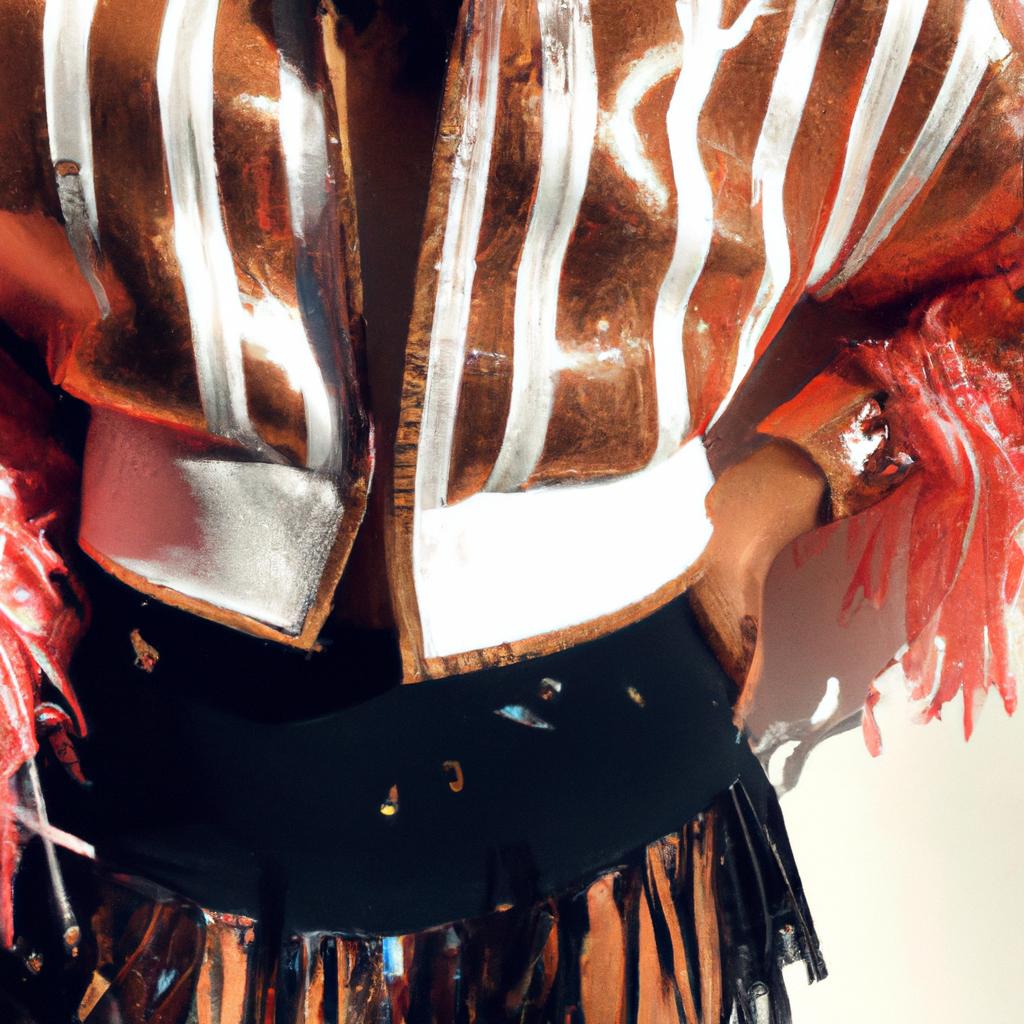 Step up your style game: 5 must-try innovative fashion trends
Step up your style game: 5 must-try innovative fashion trends 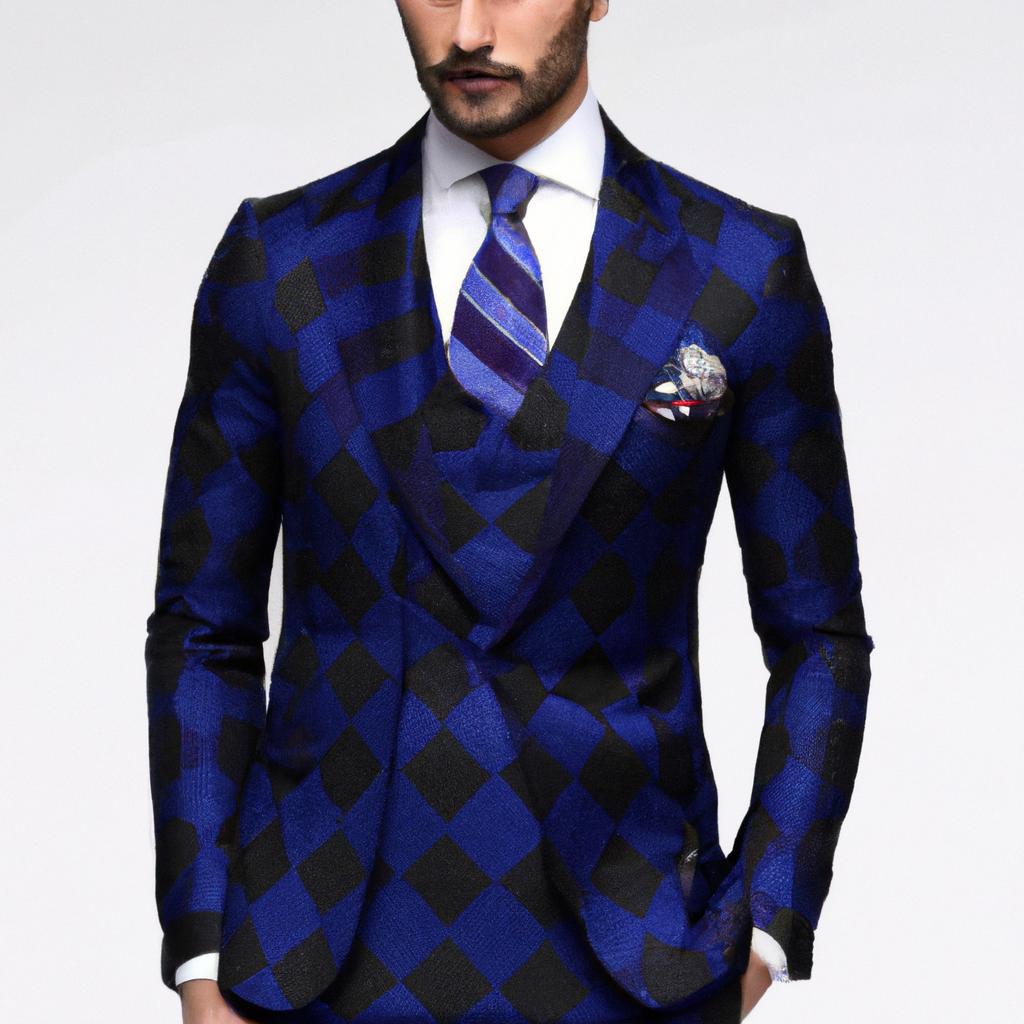 Stay Ahead of the Fashion Game: The Latest Trends in Menswear Design
Stay Ahead of the Fashion Game: The Latest Trends in Menswear Design  Cruising in Style with CarmelLimo: Because You Deserve to Feel Fancy
Cruising in Style with CarmelLimo: Because You Deserve to Feel Fancy  Dress to Impress: Essential Menswear for Every Weather Condition
Dress to Impress: Essential Menswear for Every Weather Condition